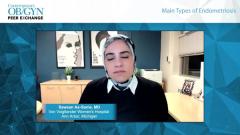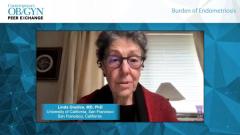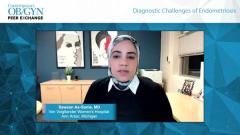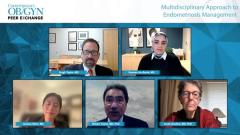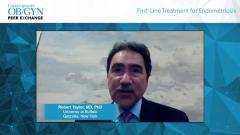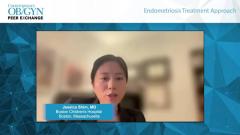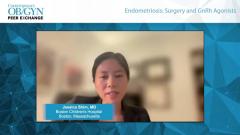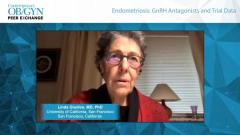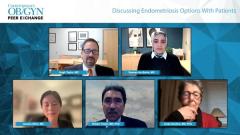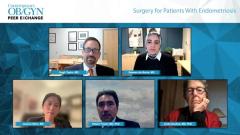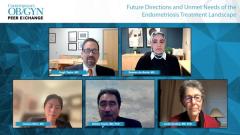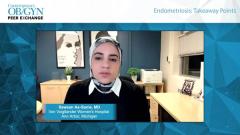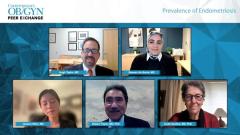
Future Directions and Unmet Needs of the Endometriosis Treatment Landscape
A panel of a experts provide an overview of the unmet needs and future directions of the endometriosis landscape.
Episodes in this series

Hugh Taylor, MD: Let’s move on to our third segment: future directions and unmet needs. Rob, what are some of the unmet needs or gaps in our available therapies?
Robert Taylor, MD, PhD: I’m pretty strongly of the opinion that in the future, we need to have medical therapeutics that don’t target the hypothalamic-pituitary-ovarian axis. We want to protect that axis as much as we possibly can. Not necessarily just for the preservation of fertility during the treatment time, because we all have patients who are willing to change their priorities temporarily. I’m trying to come up with approaches. I’m thinking about the inflammatory aspects of endometriosis and coming up with some targets in that pathway. As Linda mentioned earlier, there’s an immunological component to endometriosis that we hardly understand at all.
But with a number of the points that you guys have brought up during the discussion—the overlap with myofascial disease, interstitial cystitis, inflammatory bowel diseases—there’s a commonality in all those in terms of pro-inflammatory cytokines. Those seem to be attractive targets for new therapies. There have also been approaches to target nerve function directly, so coming up with nonhormonal medications is 1 of the biggest gaps we have, 1 of the biggest unmet needs. It’s something that could change the way we approach the disease if we could come up with good candidates.
Hugh Taylor, MD: That will come from a basic understanding of the pathophysiology of the disease. Once we know how it functions, we can target those pathways specifically rather than complete hormone suppression. How about diagnostics? Linda, you mentioned that there may be diagnostics other than laparoscopy on the horizon. Is there a role for those, or are we pretty good at making a clinical diagnosis in starting empirical treatment?
Linda Giudice, MD, PhD: We think we’re good at doing clinical diagnosis. There’s a role in having a molecular diagnosis, and there are a number under development. There are a number on clinicaltrials.gov for microRNAs in the blood and saliva. Also, we do endometrial biopsies and certain gene signatures have been looked at and are continuing to be looked at. In addition, menstrual blood is a potential source for analysis, and plasma and venous blood [are sources] for combinations with circulating cytokines. We’re at a point where I’m hoping 1 or more of these approaches will be successful. It’s also going to depend on the patient population. The adolescent is probably more amenable to saliva or a blood test than an endometrial biopsy. Having a choice would be fantastic.
Hugh Taylor, MD: I could imagine that for somebody who’s hesitant to see a physician or whose physician isn’t familiar with endometriosis, this type of testing might be very easy to
be ordered by a physician. You could even do a patient’s own home testing in the future to enable patients to get easy, accurate diagnostics. That would be very helpful. But for those of us on this call and probably many of the gynecologists who can make a clinical diagnosis, that’s very effective in what we should be doing.
Robert Taylor, MD, PhD: For the adolescent patient you suggested, the reason we have a 7- to 10-year period of time because many of us—I’ve been guilty of it, as a clinician—had not wanted to intervene in a young individual surgically, so we delayed diagnosis. But if we had a noninvasive diagnostic test, it could be useful in the setting of putting a younger patient on to medical therapy.
Linda Giudice, MD, PhD: [A diagnostic test would also be helpful in] detecting recurrence of disease and for inclusion in clinical trials. We’re still looking at laparoscopy in the previous 5 to 10 years, and it may not include patients who have active disease at the time of enrollment.
Hugh Taylor, MD: Normally, it limits you to patients who got to that point where they needed laparoscopy. Those are often the patients with more severe and stubborn endometriosis. It precludes us from testing drugs that might have worked well earlier. Good. Does anybody else have any emerging new issues that they like to discuss?
Sawsan As-Sanie, MD: I don’t know about emerging new issues, but 1 important gap in our knowledge is personalized treatment. A lot of what we’ve talked about extensively is that there isn’t a 1-size-fits-all [approach]. There’s very clear evidence that some types of treatments work in some patients, and some work better in other patients. How do we personalize that approach for a given patient? How do we reduce the time from when you make the diagnosis and initiate therapy to getting the patient on the right therapy that works well for them? We’re nowhere close to that. We basically have the kitchen sink trial-and-error approach: if 1 thing doesn’t work, we’re going to try another thing, and go from 1 treatment to another until we find something. Reducing that time through a personalized, evidence-based approach is an important gap we need to address.
Hugh Taylor, MD: One drug that I find interesting and that’s coming along—Linda, you and I were involved in advising a company developing this—is the 17-beta hydroxysteroid dehydrogenase type 1 [HDS1] inhibitors that would inhibit the conversion of estrone to the more active estradiol at the tissue level, potentially without suppressing systemic hormone levels as we talked about. That’s a potential gap—something that doesn’t suppress the hypothalamic-pituitary axis and systemic hormone therapy. Do you see that as a potential treatment option that may have promise in the future?
Linda Giudice, MD, PhD: I do. There’s a lot about the lesions that we don’t know about. We’re learning more about the lesions and the molecular determinants of these lesions, and having targets in the lesions may be another path to develop [because] this would be from 17-beta HSD1 inhibitor.
Hugh Taylor, MD: That’s the first step. Well, that and aromatase inhibitors, but that hasn’t panned out quite as well. But [there are] these local hormone endocrine changes that we can potentially make. From there, there are other molecular pathways that we’re willing to target.
Linda Giudice, MD, PhD: Rob’s comment about the immune system is an important 1 and is likely to open a new area for immunotherapies of various kinds. Angiogenic inhibitors in reproductive-age women are probably not such a good thing. Some studies, at least animal studies, show that these help with regard to endometriosis prevention of progression.
Hugh Taylor, MD: There is a lot of potential to have a bigger impact here.
TRANSCRIPT EDITED FOR CLARITY
Newsletter
Get the latest clinical updates, case studies, and expert commentary in obstetric and gynecologic care. Sign up now to stay informed.

